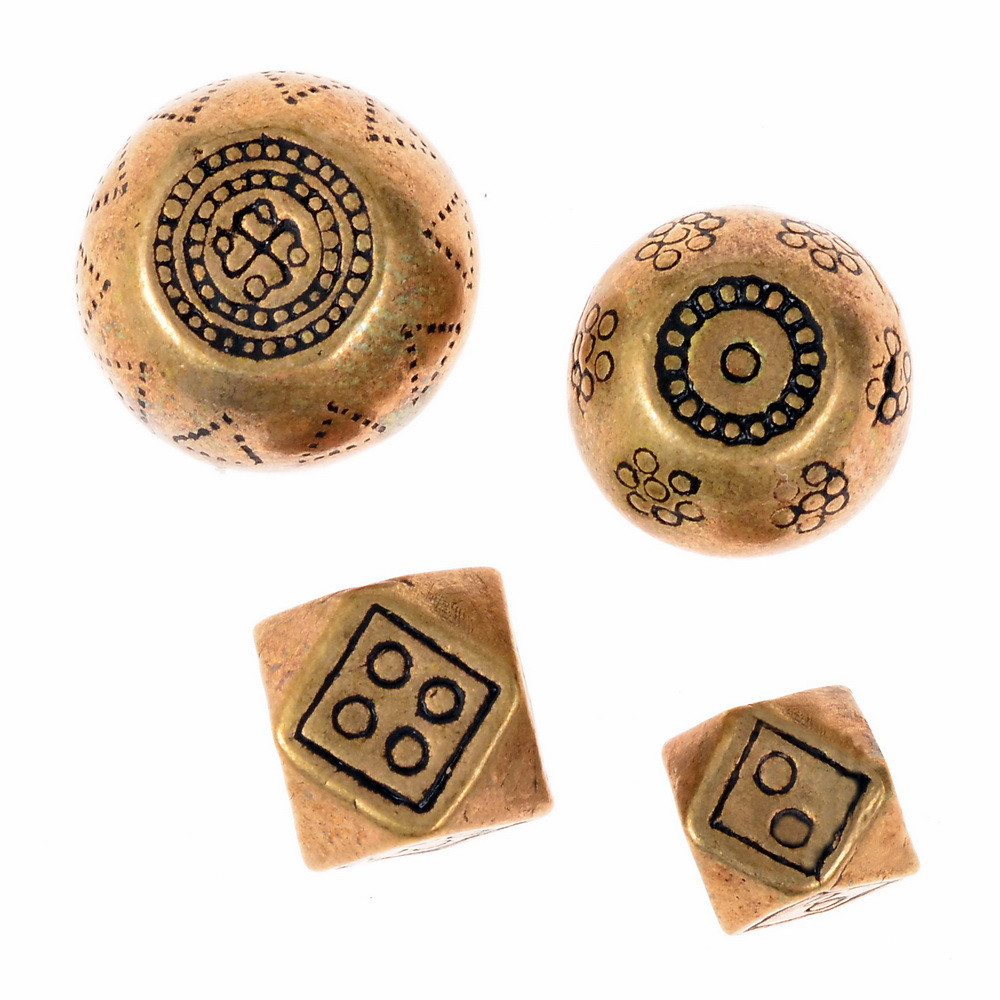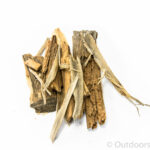Beskrivning
Bronze weight for Viking folding scale – 4 grams.
Here you can buy an authentic replica of a weight for Viking folding scales, which was made according to historical models from the 9th to 10th century.
This scale weight in the form of a so-called cuboctahedron corresponds quite exactly to the original bronze weights of the Viking Age and measures 0.8 x 0.8 cm and weighs exactly 4 grams. Link to original Viking weights…
Kuboktaedic scale weights are first attested for the Viking Age in the second half of the 9th century and spread throughout the entire Baltic region.
To weigh, a Viking scale was filled with hack silver or silver coins in one pan and balanced on the other side with the appropriate counterweights until the pointer of the scale aligned in the middle.
To use the Viking scales properly, you can buy other bronze weights with 2 grams, 6 grams and 8 grams in addition to this Viking weight with 4 grams.
Of course, in the Viking Age, the use of a scale also required appropriate weights. Thus, together with folding scales, corresponding scale weights also reached the north in the course of the silver flow from the Arabian regions.
Weights for Viking scales usually came in three different forms:
Cubooctahedron weights had the shape of cubes with cut-off corners, where the square cube faces had a line or row of dots on the edge and small punched circles or dot eyes showed the weight value of the scale weight.
Ball zone weights were in the shape of spheres, the top and bottom of which were flattened and had rows of decorative dots around the edge. Again, circular patterns or curved lines in the centre of the area were used to indicate the value. I
Double-zone weights were quite similar to the spherical Viking weights, but had a conical shape rather than a spherical one, and appeared more frequently at the transition from the 10th to the 11th century.
It is astonishing that despite the lack of centralized authority among the Vikings, the standardization of uniform units of weight prevailed. Nevertheless, many Viking weights made of lead also show the use of personal weight systems of the respective merchants.
The early Viking weights were still made of iron covered with a thin skin of bronze or another copper alloy, which was intended to prevent the weights from being manipulated. Towards the end of the 10th century, standardized scale weights were increasingly made entirely of a copper alloy, such as bronze.






